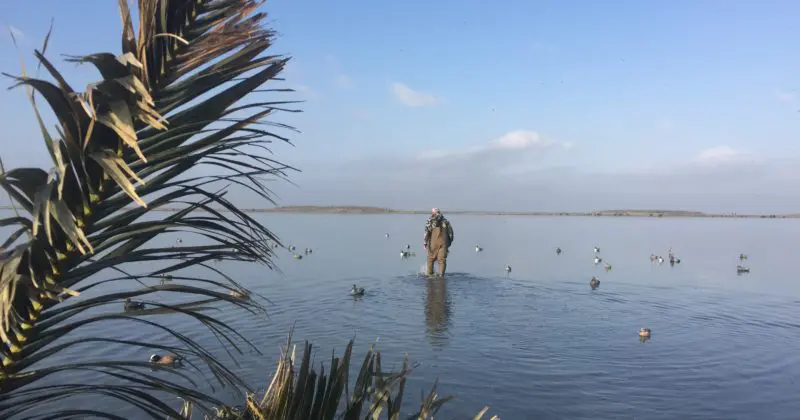As we concluded our annual trip to the Dallas Safari Club convention we resisted the temptation to immediately return home to consistent sub-zero temperatures. Truth be told we had already made plans to maximize our time in the Lone Star State, the 90-degree temperature improvement was just a bonus.
In the days immediately after the show our team set out to visit a number of ranches that we work with. These ranches offer our clients trophy Texas whitetails, hog and javelina, predator hunting, and free-range exotics. While there, not only did we get to spend some quality time together as a team but we also got to further expand our intimate knowledge of the ranches and the outfitters we work with. We observed numerous trophy whitetails, plentiful hogs, a few coyotes and bobcats, and a number of Blackbuck and Auodad, again these were all free range, no high fences here.
At the commencement of our west Texas visits, while most of the team boarded flights for home, Dave and Jim headed south to inspect a new destination that had come highly regarded by a trusted friend.
Now South Texas is deer country. You simply can’t escape it. Everywhere you turn in South Texas it is abundantly clear that they love their whitetail hunting. Perhaps nowhere was that more evident than on our stop at the historic Muy Grande in Freer, Texas. And while we have a deep appreciation for whitetails, we had to remind ourselves that the mission at hand was waterfowl. That was easy to do as the next day and half would prove extremely memorable. Neither the ducks, nor the hunting, nor the hospitality would disappoint.
Admittedly, we already have some great duck and goose hunting opportunities. From Saskatchewan and Manitoba down through the upper Midwest and into the heart of Missouri, some of the best. What we have found in Texas is an equally exciting opportunity.
While Mallard may be the prize for many, on this trip we were in search for something else. For northern hunters who are used to bags of Mallards and Wood Ducks, we were seeking an exciting alternative to our usual quarry. We wanted variety on this trip, and boy did we find it. Not only variety but quantity and quality, with many gorgeous drakes being taken. This was a trip that would make any taxidermist smile. Where we come from, it is not unusual for hunters to break shore ice to access the waters that host that short-lived flight of diver ducks. And it can be downright cold. So, with temperatures nudging past eighty degrees it was hard to believe we were in the thick of the duck season, but we were.
Included in the birds we shot on this two-day hunt were Pintails, Bluebills, Green Wing Teal, Blue Wing Teal, Bufflehead, and Shoveler. We also saw, Greater and Lesser Scaup, and Common Mergansers mixed in. And while we did not get into them, another group sharing camp with us found the Widgeon and Gadwall in plentiful flocks. And then there were the Redheads. Oh my were there Redheads. With confidence we can conservatively, and honestly say that we saw over 10,000 redheads and may have decoyed nearly 1,000 of them. Not only did they decoy, they landed at extremely close range. We had more fun watching and observing these beauties in their natural habitat than we did in harvesting them.
If the hunting wasn’t reason enough to grin, the friendly hard-working guides, well trained dogs, comfortable bayside accommodations, and tasty food didn’t hurt either. The warm breeze in our face accelerated by the jet boats used to access our blinds were only an added pleasure in this great adventure. From the jet boat we saw thousands and thousands of waterfowl, seabirds, and even a few Roseate Spoonbills (a close cousin of the flamingo). This was all quite a sight for a northern hunter. In some ways this adventure combined the fun and beauty of an everglades tour with that of a hunting trip. It was exhilarating. In the end, perhaps the only one happier than us after this trip may be the taxidermist.








